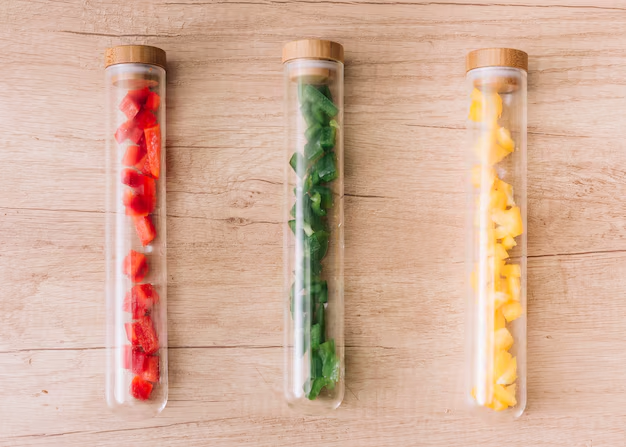What Exactly Are Refrigerator Pickles? Discover Their Tangy Appeal!
Refrigerator pickles have taken the culinary world by storm with their zesty flavors and crisp texture. Unlike their canned counterparts that require meticulous boiling and sealing, these pickles offer a straightforward and accessible approach to preserving. Whether you're a seasoned chef or an enthusiastic home cook, understanding refrigerator pickles could inspire you to plunge into a world of homemade delights.
🍴 The Essence of Refrigerator Pickles
What Sets Refrigerator Pickles Apart?
Refrigerator pickles are a type of quick pickle that are not processed through heat canning, making them easier and quicker to prepare than traditional pickles. The pickling process involves immersing fresh vegetables in a brine made of vinegar, water, sugar, and spices. Once prepped, these veggies spend a brief time marinating in the refrigerator before they're ready to eat. This method not only preserves the vibrant color and crunchiness of the vegetables but also captures their fresh flavors elegantly.
Why Choose Refrigerator Pickles?
While traditional pickling methods demand patience and a precise set of skills, refrigerator pickles offer simplicity without sacrificing quality. Here's why they're a popular choice:
- No Special Equipment: Forget about canning pots and pressure cookers. A simple jar, a fridge, and basic ingredients are all you need.
- Time-Saving: In just a matter of hours, you can enjoy tangy, zesty pickles.
- Customizable: Experiment with herbs, spices, and vegetables. Whether you love garlic, dill, or chili flakes, you can adjust the recipe to suit your tastes.
- Healthier Option: Retaining more nutrients due to the raw, unheated vegetables.
🥒 Making Your Own Refrigerator Pickles
Essential Ingredients
Crafting these crunchy delights typically requires a short list of ingredients most likely already in your pantry:
- Vinegar: Typically white vinegar is the go-to for its neutral flavor, but apple cider, rice, or white wine vinegars can add distinct dimensions.
- Water: To dilute the vinegar and adjust acidity.
- Sugar and Salt: Balances and enhances flavors. Opt for kosher or sea salt as they’re free from additives.
- Vegetables: The classic choice is cucumbers, but you can use carrots, bell peppers, radishes, or green beans.
- Spices and Herbs: Garlic, dill, mustard seeds, and crushed red pepper are common choices.
Step-by-Step Guide to Creating Refrigerator Pickles
Prepare the Brine: In a saucepan, combine vinegar, water, sugar, and salt. Heat until the sugar and salt dissolve completely. Remove and let it cool at room temperature.
Wash and Cut Vegetables: Clean your chosen vegetables under running water. Peel them if necessary, and then slice them into spears, rounds, or any preferred shape.
Layer with Spices: In a clean jar, layer your vegetables, inserting herbs and spices between layers.
Add the Brine: Pour the cooled brine over the veggies till they’re completely submerged.
Refrigerate: Seal the jar with a lid and refrigerate. Within 24-48 hours, your pickles will be ready to tantalize your taste buds.
Pro Tips for Successful Pickling
- Uniform Slicing: Ensure even thickness across vegetables to promote uniform flavor absorption.
- Flavor Rests with Time: While 48 hours is sufficient, waiting up to a week intensifies the flavors.
- Experiment Batches: Try small batches with various seasonings to discover different flavor profiles.
🥗 A Tapestry of Culinary Uses
How to Use Refrigerator Pickles in Your Cooking
Refrigerator pickles aren’t just a snack; they can enhance an array of dishes:
- Topping for Sandwiches and Burgers: Adds crunch and zest.
- Side for Plated Meals: Perfect palate cleanser, especially with rich dishes.
- Salad Enhancers: Mix with fresh greens for tang and texture.
- Charcuterie Boards: Provides balance with meats and cheeses.
- Garnish in Cocktails: Incorporate into drinks like Bloody Marys for an extra kick.
⏰ Storing and Enjoying the Freshness
Best Practices for Storage
- Airtight Containers: Always use jars that seal tightly to maintain freshness.
- Refrigeration is Key: Refrigerator pickles must be kept cold to prevent spoilage.
- Consume Within a Month: Best consumed within 4 weeks for optimal flavor and crunch.
🍽️ Popular FAQs about Refrigerator Pickles
Can I Experiment with Other Vegetables?
Absolutely! The joy of refrigerator pickles is the flexibility. From hearty cauliflower to spicy jalapeños, the vegetable world is your oyster.
Is There a Special Bread and Butter Refrigerator Pickle Recipe?
Indeed, replicate this classic style by adding a higher sugar ratio, turmeric, and thinly sliced onions to the brine.
Are Refrigerator Pickles a Healthier Choice?
In many cases, yes. With lower sodium levels and additive-free ingredients, you control what goes into your body, enhancing your pickling with nutritious herbs and specified sugars.
🚀 Quick Recap of Making Refrigerator Pickles
Here’s a streamlined summary to keep handy for your pickling endeavors:
- 🥒 Choose Your Veggies: Cucumber, carrots, radishes & more!
- 🌿 Customize the Flavor: Don’t shy away from garlic, pepper, dill.
- 💧 Brine It Right: Vinegar + Water + Salt + Sugar = Flavor magic.
- ⏲️ Patience Pays: 48 hours in the fridge for perfect zing!
Refrigerator pickles open a portal to flavorful escapades without rigorous canning processes. Exceptionally easy to make and versatile, they allow home cooks to engage in culinary experimentation confidently. Now that you’re acquainted with the world of refrigerator pickles, why not try crafting your own? Whether it's a subtle transformation to your homemade dishes or a bold new edge, these pickles promise to awaken the epicurean in everyone. 🥒✨
